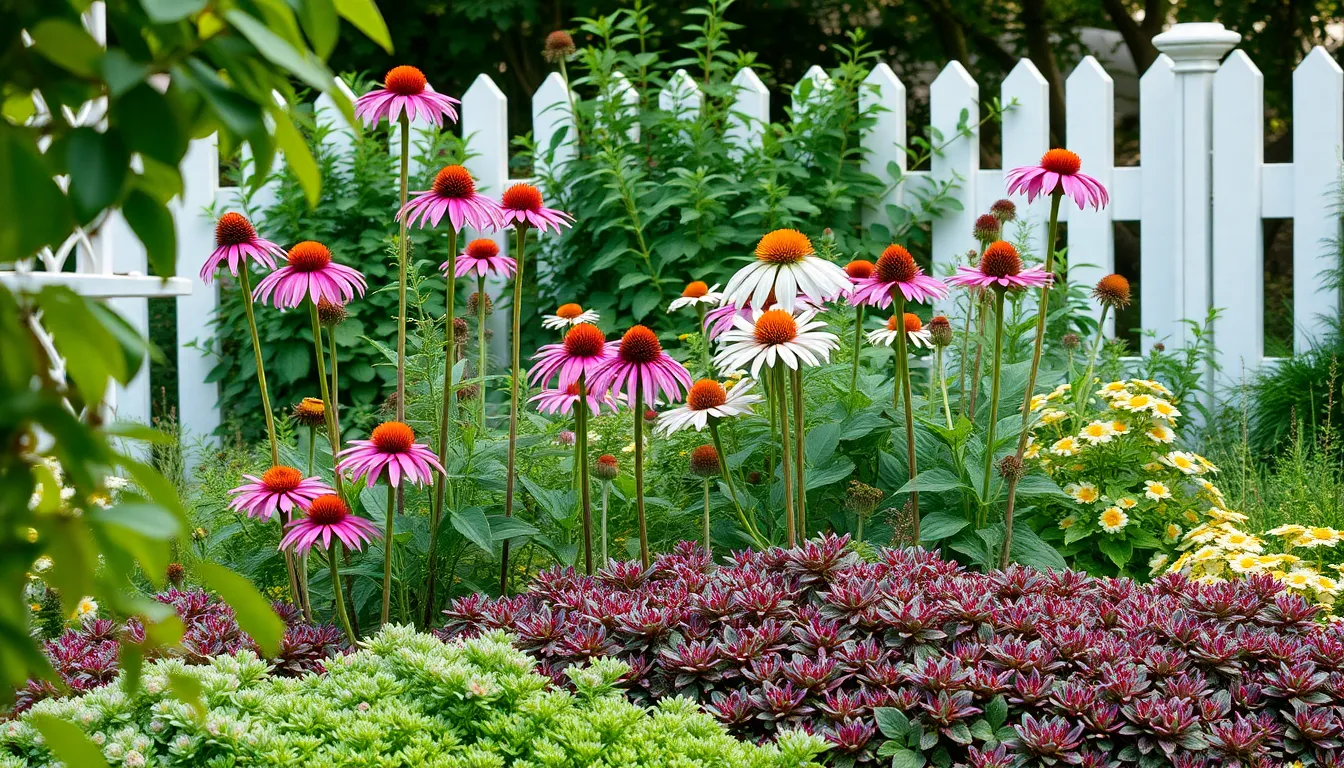Imagine stepping into your garden at any time of year and being greeted by a vibrant display of colors, textures, and scents. This is the promise of perennials that bloom all year long—a dream within reach for both novice gardeners dipping their toes into the soil and seasoned horticulturists seeking to enhance their garden’s allure. These resilient, enduring plants are not only a testament to nature’s incredible adaptability but also a gardener’s best ally in creating a dynamic landscape that offers continuous interest and beauty.
Whether you’re just starting out or have decades of experience under your belt, understanding which perennials can provide this year-round display is essential. In this article, we’ll guide you through a carefully curated selection of perennial plants that thrive across seasons, ensuring your garden remains a lively sanctuary no matter the weather. You’ll learn how to choose the right perennials for your climate, how to care for them to maximize their blooming potential, and how to design your space for perpetual delight. By the end of this journey, you’ll be equipped with the knowledge to transform your garden into a perennial paradise, bursting with life and color throughout the year.
Understanding Perennial Bloom Cycles
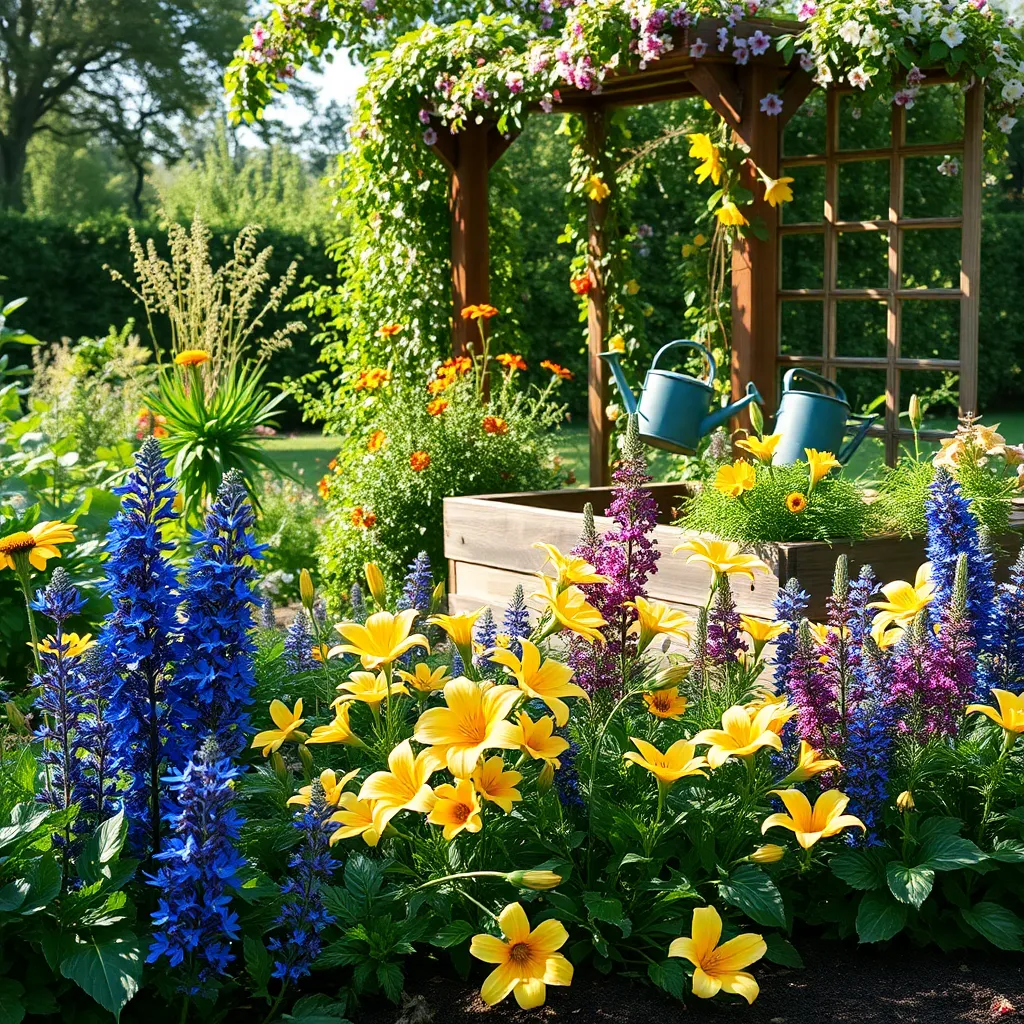
Understanding the bloom cycles of perennials is crucial for achieving a garden that appears to thrive year-round. Most perennials have a specific blooming period, but with careful selection and planning, you can have something in bloom throughout the year.
Start by researching the bloom times of various perennials to create a planting schedule. Staggering plants with different blooming periods ensures that as one plant fades, another begins to shine, maintaining visual interest in your garden.
For beginners, choose perennials known for their long bloom times, such as coneflowers and daylilies, to ensure consistent color. These plants are generally hardy and require minimal maintenance, making them ideal for those new to gardening.
Advanced gardeners can experiment with succession planting, combining early spring bloomers like hellebores with summer stars like black-eyed Susans. Integrating late bloomers such as asters and mums extends the garden’s vibrancy into autumn, maximizing your garden’s potential.
Top Year-Round Blooming Varieties
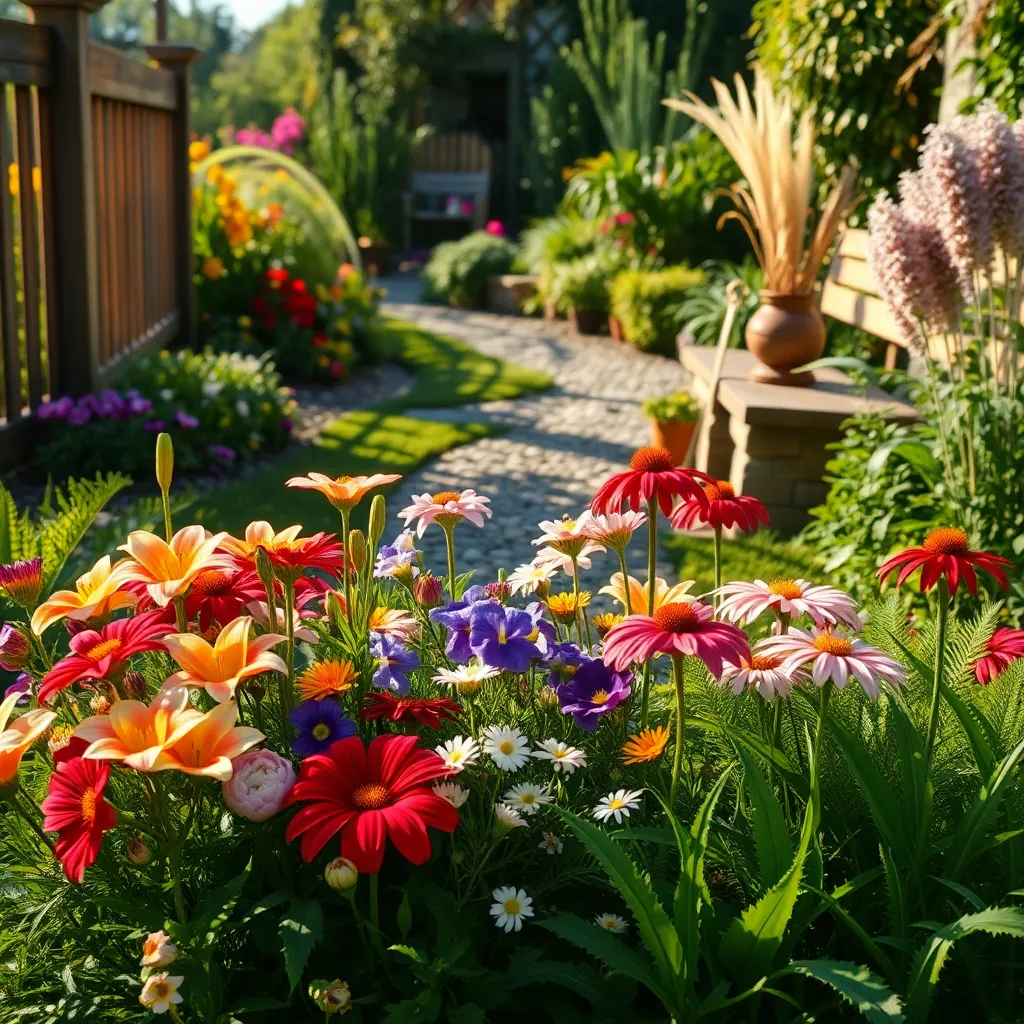
When selecting perennials that bloom year-round, consider the climate and soil conditions of your garden. Plant varieties that are adaptable to your local climate to ensure a continuous display of flowers.
One excellent choice for year-round blooms is the Lantana, known for its vibrant clusters of flowers. Lantanas thrive in well-draining soil and full sun, requiring moderate watering to maintain their lush appearance.
Geraniums are another fantastic perennial option that can provide colorful blooms throughout the year. To keep Geraniums thriving, use a balanced fertilizer every four to six weeks and ensure they receive at least six hours of sunlight daily.
For those in frost-free areas, Bougainvillea offers a striking display of color with minimal care. Prune Bougainvillea lightly to encourage more blooms and plant them in sandy soil with excellent drainage.
Climate Considerations for Perennials
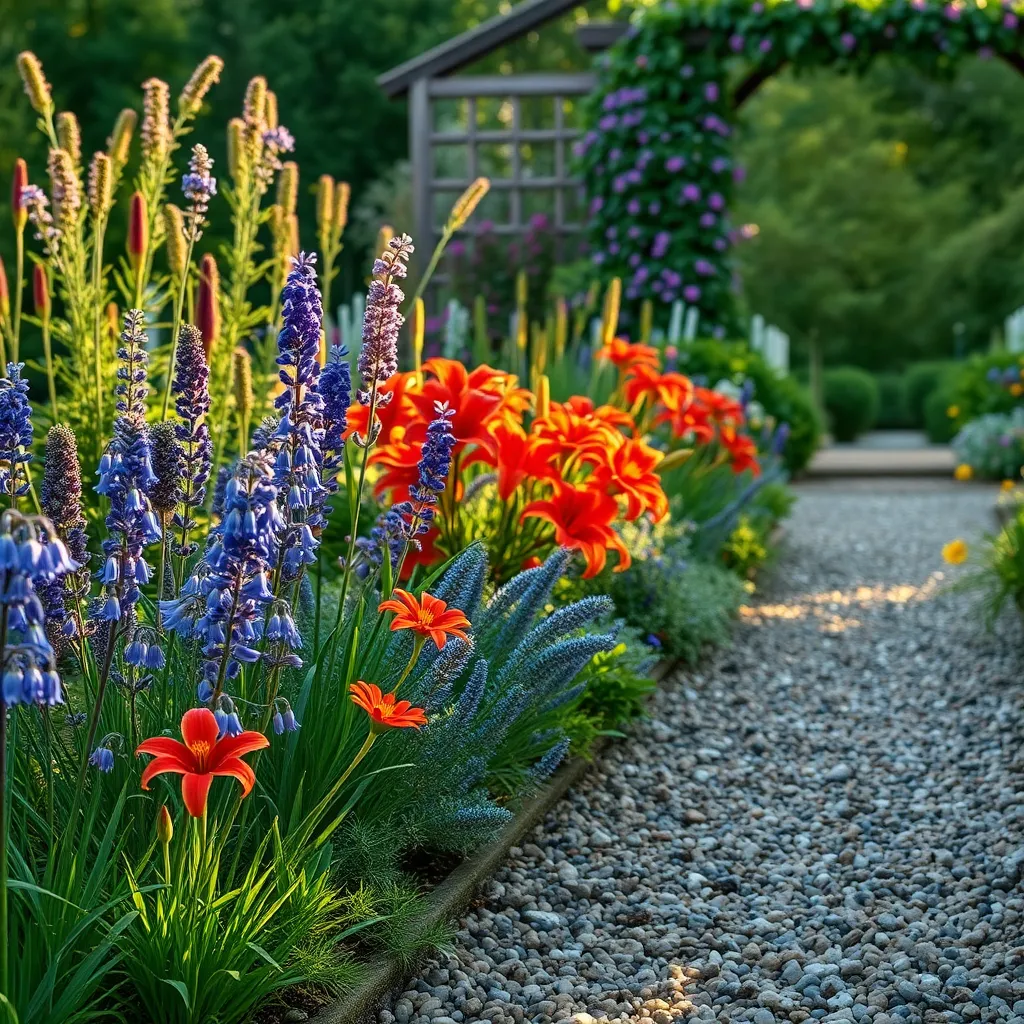
When growing perennials that bloom year-round, understanding your climate is essential. Different perennials thrive in various conditions, so it’s crucial to select plants that are compatible with your local weather patterns.
Begin by identifying your USDA hardiness zone, as this will guide your plant selection. Plants that are not suited to your zone may struggle to survive the winter or may not bloom as expected.
In warmer climates, such as zones 9 through 11, consider perennials like Lantana and Bougainvillea, which thrive in heat and can handle direct sunlight. These plants typically require well-draining soil and moderate watering, making them ideal for sun-drenched areas.
Conversely, gardeners in cooler zones, like 4 through 6, might focus on perennials like Hellebores or Bergenia. These plants are frost-tolerant and can bloom in the cooler months, providing color even when most other plants are dormant.
To maximize blooms, pay attention to microclimates within your garden. Areas near walls or fences may offer shelter from harsh winds, creating a more hospitable environment for delicate perennials.
Advanced gardeners can experiment with mulching and seasonal covers to extend the blooming period of their perennials. Mulch helps maintain soil temperature and moisture, while covers can protect against unexpected frosts.
Planting and Care Tips
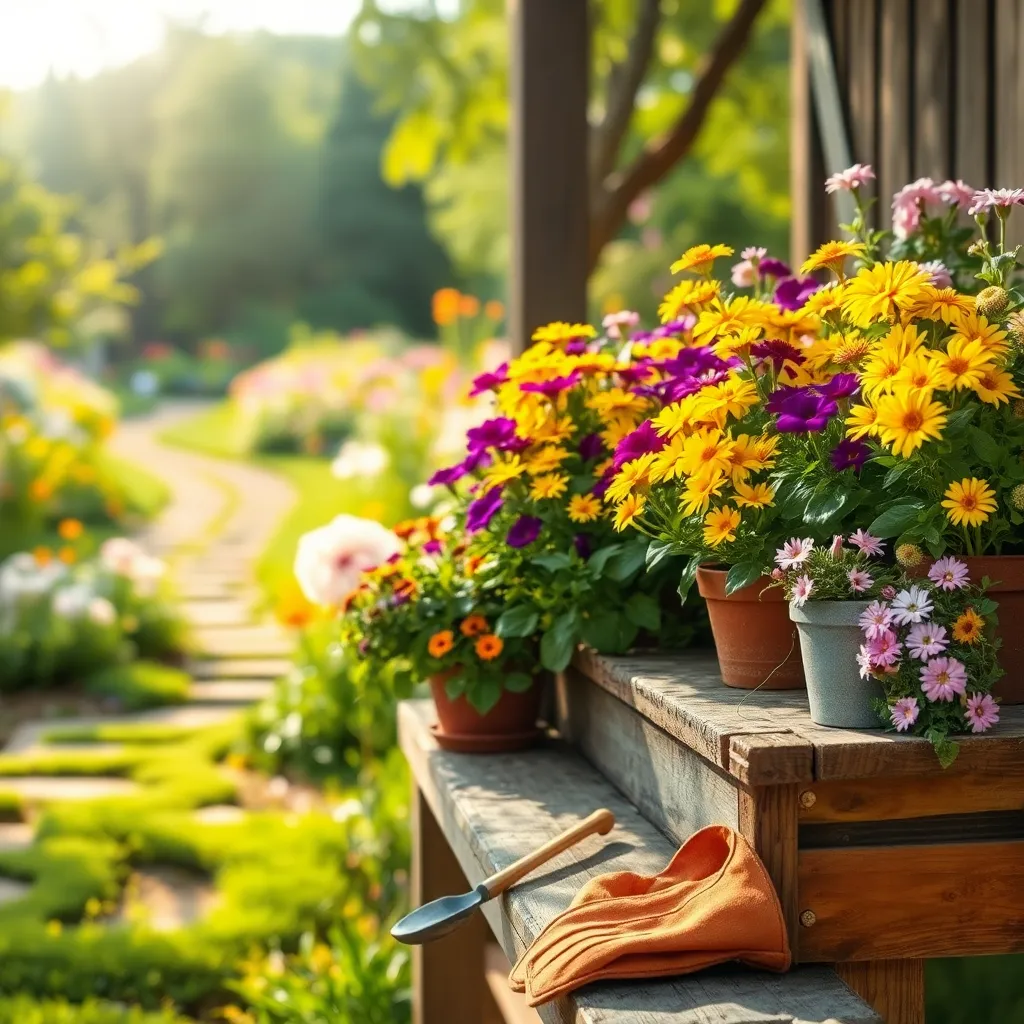
When planting perennials that bloom all year long, it’s crucial to select the right location based on sunlight requirements. Most perennials thrive in areas with at least six hours of full sun, but some varieties can tolerate partial shade.
Begin with preparing the soil by incorporating organic matter such as compost or well-rotted manure. Loamy soil with good drainage is ideal to prevent root rot, especially in areas with heavy rainfall.
Watering is a key factor in successful perennial gardening. For most perennials, water deeply once a week, ensuring the soil stays consistently moist but not waterlogged.
After planting, apply a layer of mulch around the base of your plants. Mulching helps retain moisture, suppresses weeds, and provides extra nutrients as it breaks down over time.
Pruning is essential to encourage continuous blooming throughout the year. Regularly deadhead spent flowers and remove any dead or damaged foliage to maintain plant health and appearance.
Fertilizing perennials can boost growth and blooms, but it’s important not to overdo it. Use a balanced, slow-release fertilizer in the spring and again in mid-summer to support their nutritional needs.
Advanced gardeners might consider dividing perennials every few years to rejuvenate plants and control their spread. Divide plants in early spring or fall, ensuring each division has a robust root system for successful replanting.
Dealing with Common Challenges
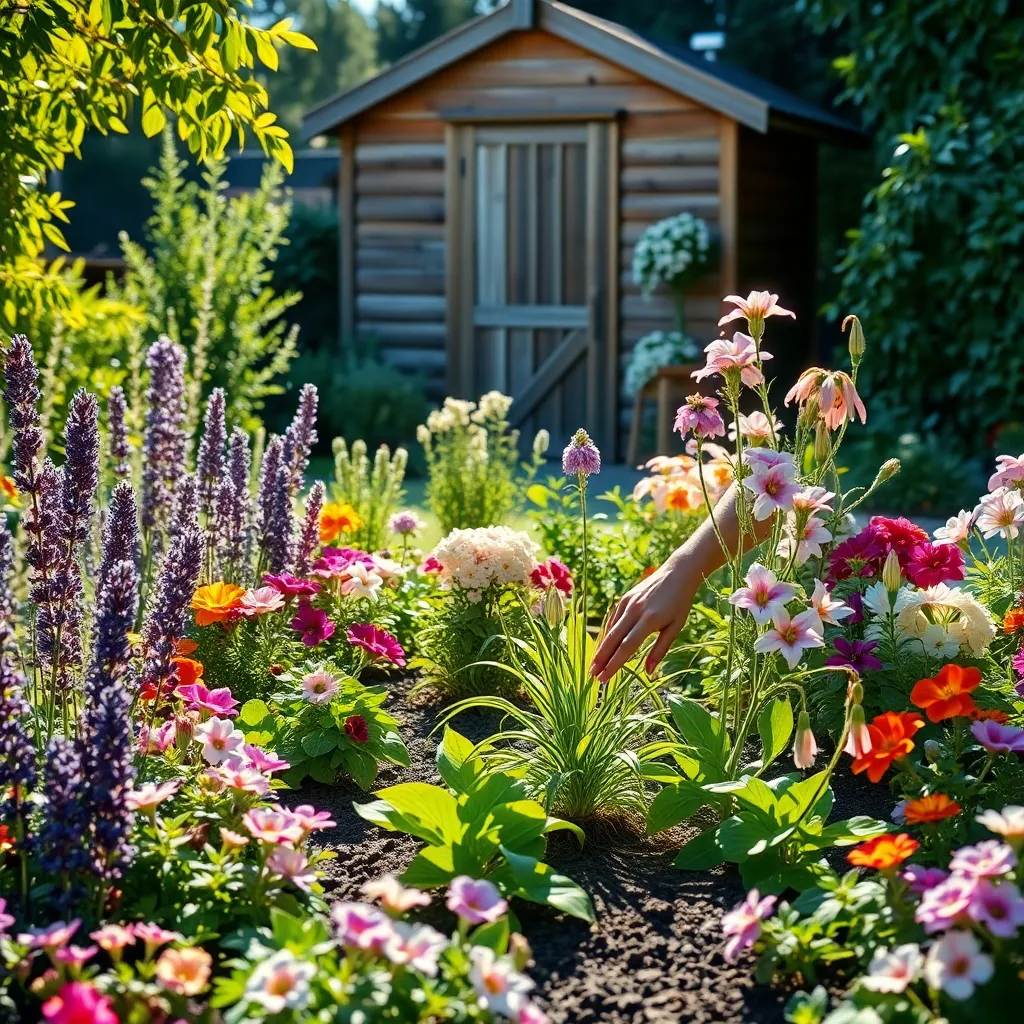
One common challenge with perennials that bloom all year is managing their water needs. While these plants are generally hardy, it’s essential to avoid overwatering by ensuring the soil is well-draining. Consider using a soil mix that includes sand or perlite to enhance drainage, which helps prevent root rot.
Dealing with pests can also be a persistent issue for gardeners. Regularly inspect your plants for signs of infestation, such as discolored leaves or unusual growth. Implement natural pest control methods, like introducing beneficial insects such as ladybugs or applying neem oil, to manage pests without harming the environment.
Proper sunlight exposure is crucial for continuous blooming. Ensure your perennials receive at least six hours of sunlight daily by choosing a planting location that isn’t shaded by larger trees or structures. If your garden lacks adequate sunlight, consider planting shade-tolerant varieties like hellebores or ferns that thrive in lower-light conditions.
Fertilization is another key aspect of maintaining healthy, blooming perennials. Use a balanced, slow-release fertilizer once in the spring and again in mid-summer to provide essential nutrients. For advanced care, test your soil every few years to adjust your fertilization strategy based on specific nutrient deficiencies, ensuring your plants have everything they need to flourish year-round.
Conclusion: Growing Success with These Plants
In the journey of nurturing a relationship that blooms like a perennial all year long, we’ve explored five vital concepts: the importance of consistent communication, the power of empathy and understanding, the need for shared goals and dreams, the role of flexibility in facing life’s challenges, and the magic of simple, everyday acts of love. By embracing these principles, relationships can thrive and remain vibrant through all seasons.
As a tangible next step, choose one principle to focus on this week. Perhaps start by initiating a heartfelt conversation with your partner or planning a small surprise to express appreciation. These small actions can create ripples of positivity in your relationship.
Remember to save or bookmark this article for ongoing inspiration and guidance. Relationships, much like gardens, require regular care and attention. By revisiting these concepts, you ensure that your relationship continues to flourish.
Looking ahead, know that applying these insights consistently will pave the way for enduring relationship success. With intentional effort, your love can become a perennial, blossoming beautifully throughout the years. Empower yourself with these tools, and watch your relationship thrive.

